The outhaul on any boat gets a lot of use and can cause its share of headaches. Outhaul failures are often race-ending events. Although outhaul failures seem rare, S&R Marine in Pewaukee, WI claims to do plenty of repairs on outhauls. After talking to S&R Marine and John Porter, a frequent SailZing contributor, we collected six tips to prevent outhaul failures or manage their impact.
We updated this post from the original with new tips and insights.
Outhaul Design
The outhaul uses mechanical advantage to tighten the foot of the sail. In most boats, the mechanical advantage is obtained from blocks inside the boat and/or in the boom itself. See typical in-boom layouts on the Harken website.
See the MC Scow boom internal layout below. The three large dots represent blocks. The forward wire is 1/8″ diameter in newer boats and 3/32″ diameter in many older boats. The aft wire attached to the shackle is 3/32″ diameter.
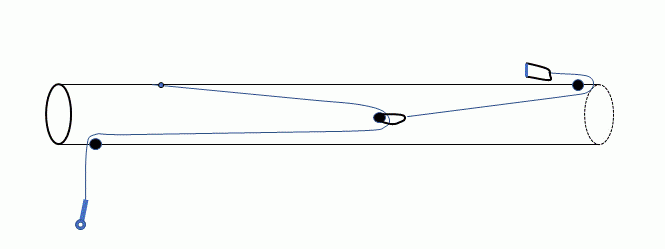
Prevent Outhaul Failures
Here’s a collection of outhaul-related issues, either self-induced or due to normal wear, along with some tips to prevent them.
- Frayed cable. When you start seeing or feeling sharp wire ends on your outhaul, it’s time to replace the cable. Outhauls take a lot of tension, and fraying cable is a sure sign of upcoming failure. Tip #1 – inspect your outhaul wires at least once per season.
- Worn through-blocks. With all the load on the outhaul, the through-blocks that feed the cable through the wall of the boom can wear and start to wobble. If the block gets wobbly, the wire may get jammed in the space between the block and the boom wall. If you suspect wear, check the blocks for wobble and free rotation. Tip #2 – inspect the through-blocks at least once per season.
- Twisted cable. The cable can get twisted inside the boom. This becomes more probable as the pulley wears unevenly. On newer boats, Melges has started using larger diameter wire (1/8″) in the forward portion of the boom to prevent twists. Tip #3 – try to avoid twisting the outhaul cables. Also, keep some tension on the outhaul when transporting it, using tape or by tying it off.
- Shackle accidents. If you sideswipe another boat with your boom (shame on you!) your outhaul shackle can hang up on the other boat’s shroud and bend or break. This is probably a race-ending event, since the clew of the sail will move rapidly forward in the track and you won’t be able to pull it back. Tip #4 – see the instructions below for a simple modification to install a preventer.
Outhaul Preventer
You can’t always prevent outhaul failures. Here’s a 30-minute modification to hold the clew in place if the outhaul shackle or wire fails. Such an arrangement is often called a keeper line or preventer.
- Get an 15″ length of 1/8″ diameter spectra line.
- Tie one end of the spectra to a fixed point on the boom, such as the machine screw holding the boom-end block.
- Make a narrow slot in the end of the boom using a drill or angle grinder. File the slot so it’s smooth.
- Rig the sail and tighten the outhaul to the loosest setting you use when sailing.
- Pass the spectra line through the clew grommet and tie a figure-eight knot in the free end of the spectra line.
- Slip the spectra line into the slot. Adjust the knot if needed to hold the clew in this loosest position with the outhaul fully eased.
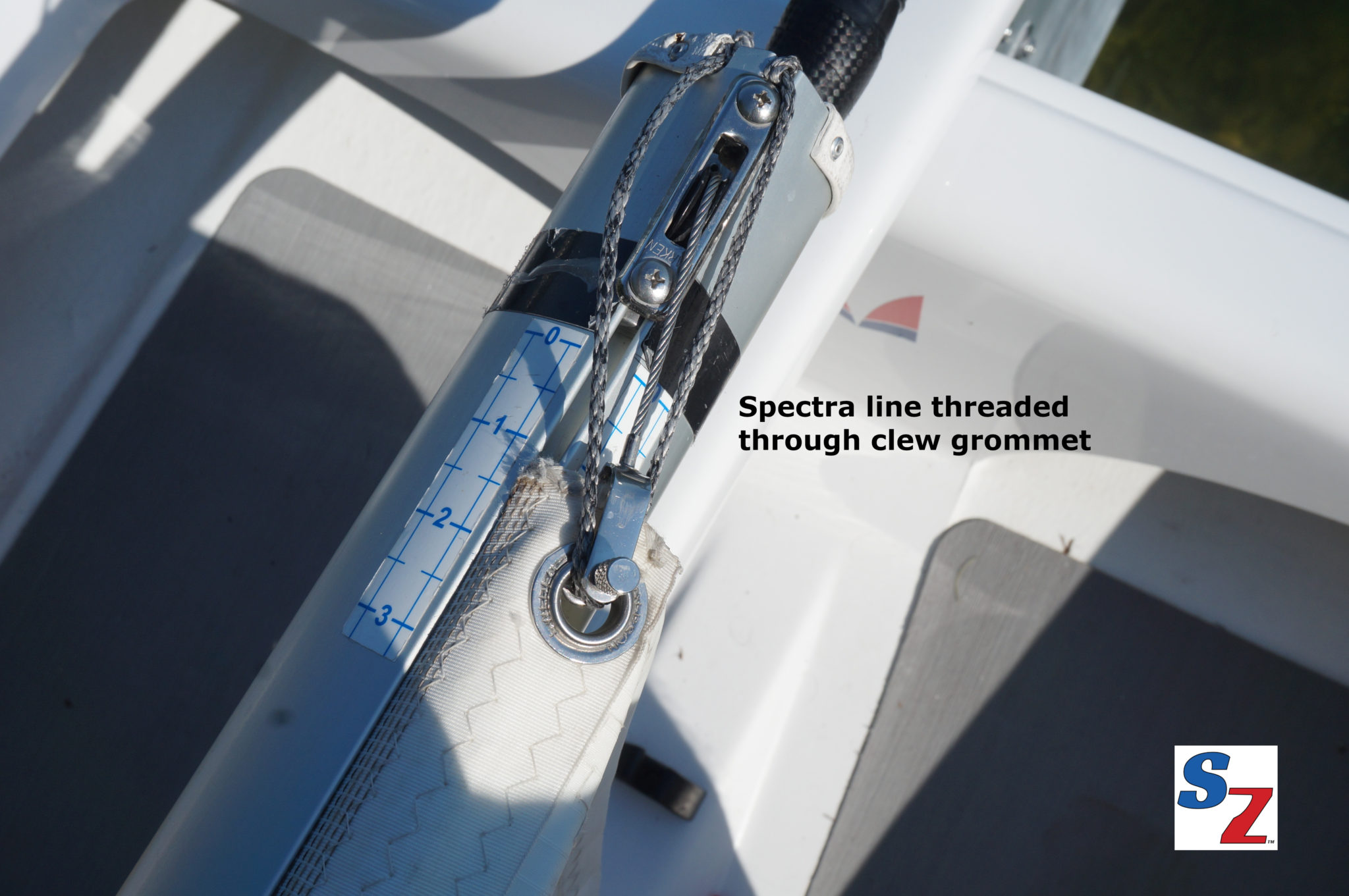
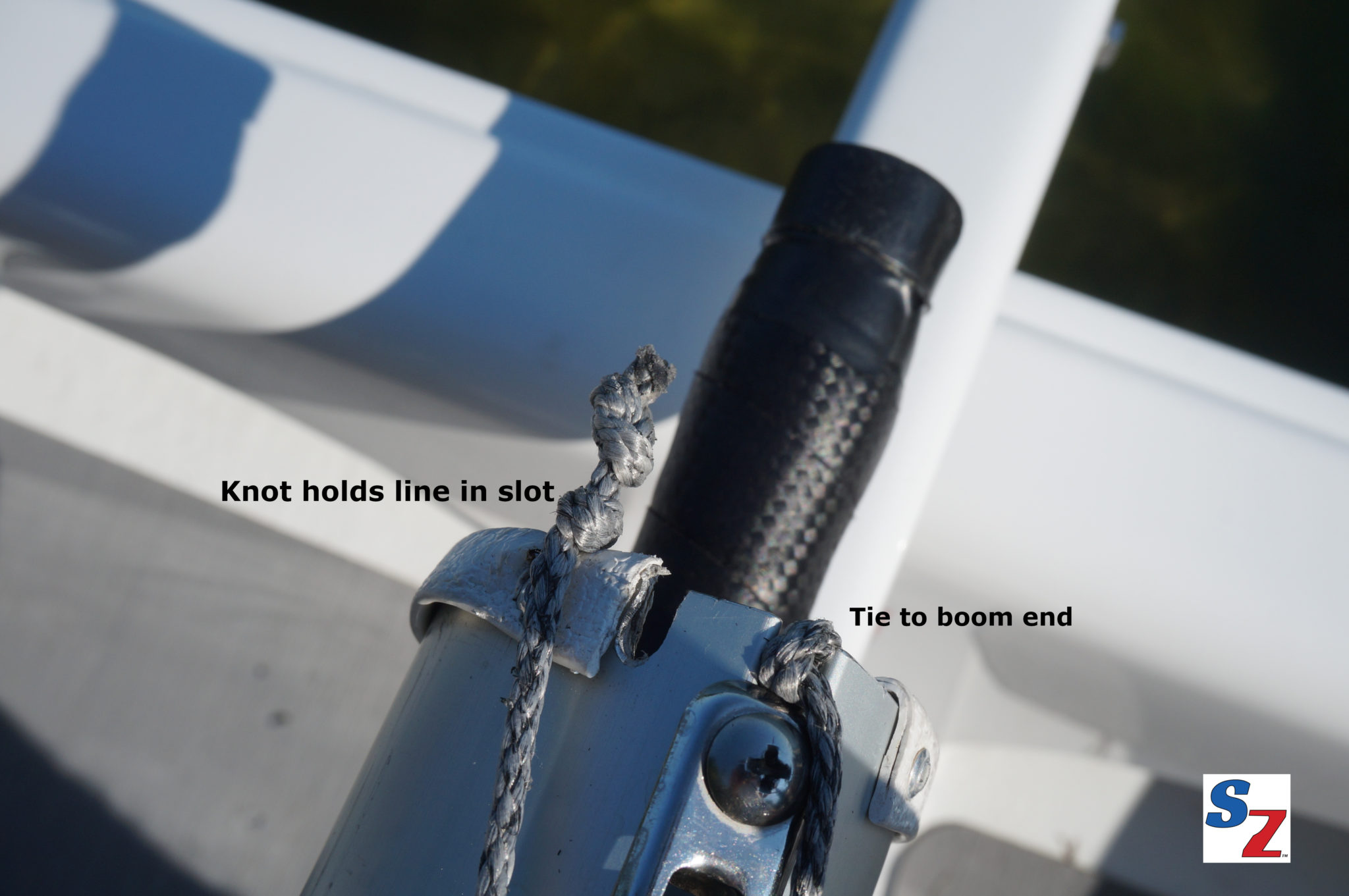
Prevent Tack Slug Failures
On an MC Scow, the tack slug is a plastic and steel u-fitting that anchors the tack of the sail to the mast using a shackle. What does this have to do with the outhaul? Well, these tack slugs are known to fail due to outhaul tension. If you have a tight outhaul and then turn downwind, you’re putting a lot of side load on the tack slug, since the sail is pulling on the slug perpendicular to the normal loading. Tip #5 – ease your outhaul before before turning downwind. John Porter says he has never broken a tack slug using this tip.
Tip #6 – replace the tack slug with the SailZing TackSlideTM. The TackSlide is designed to accept side load. As a bonus, it allows the shackle to rotate with the boom, so it doesn’t change foot tension when the boom moves in and out. See more about the TackSlide here.
Related Content:
Mechanical Advantage in Sailboats: Block and Tackle Systems
MC-Scow Tuning Guide and Speed Tips – UK PS1 Sail (emphasizes the need to adjust the outhaul)
Sailors Helping Sailors
Will you share your knowledge with your related Comments below?

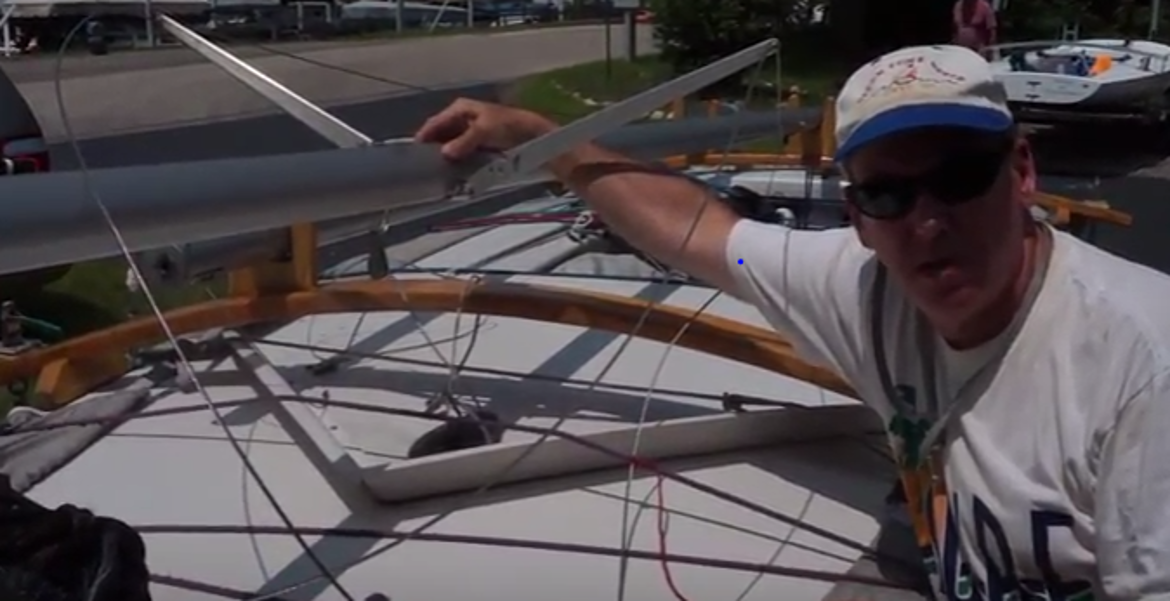
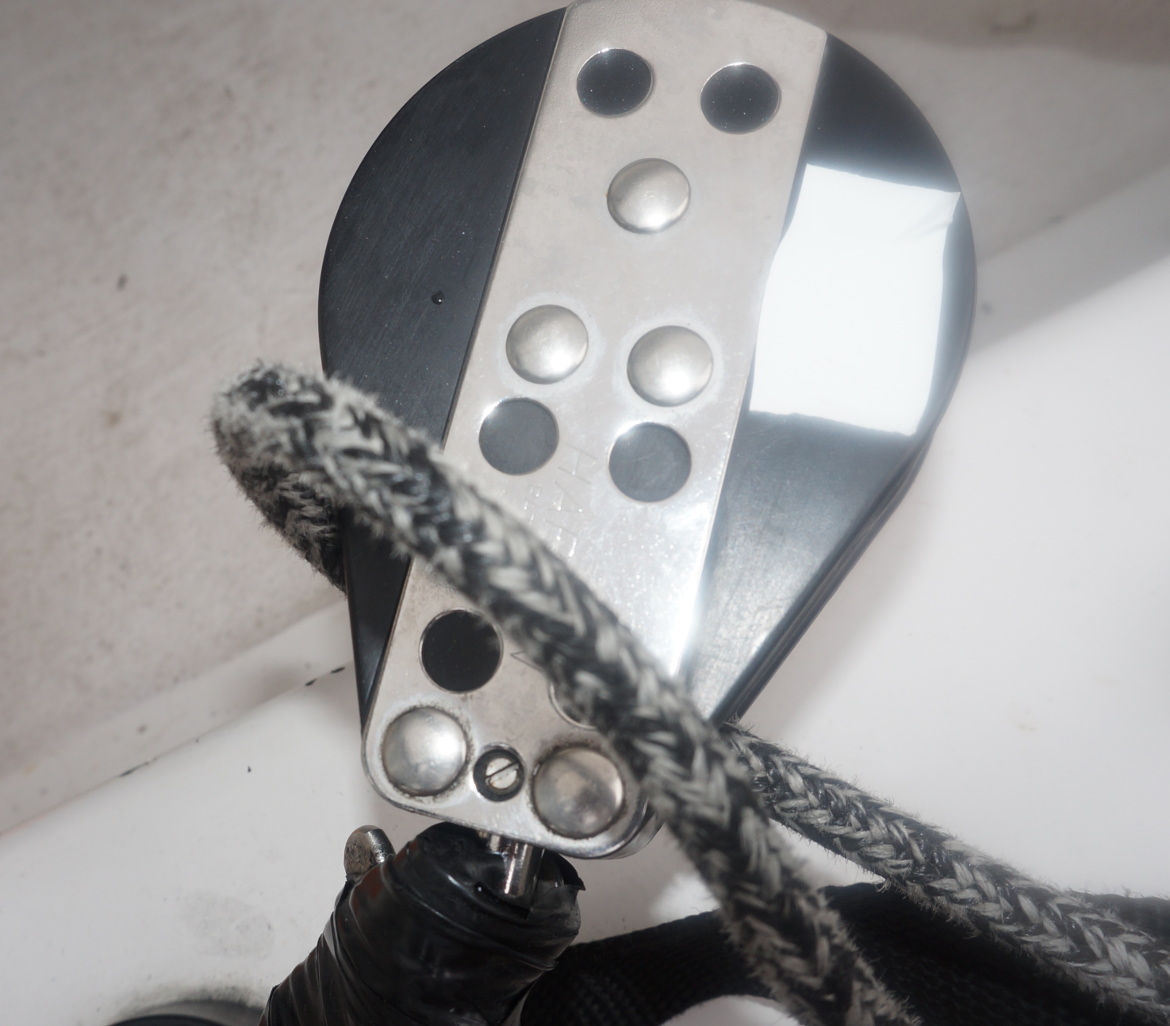
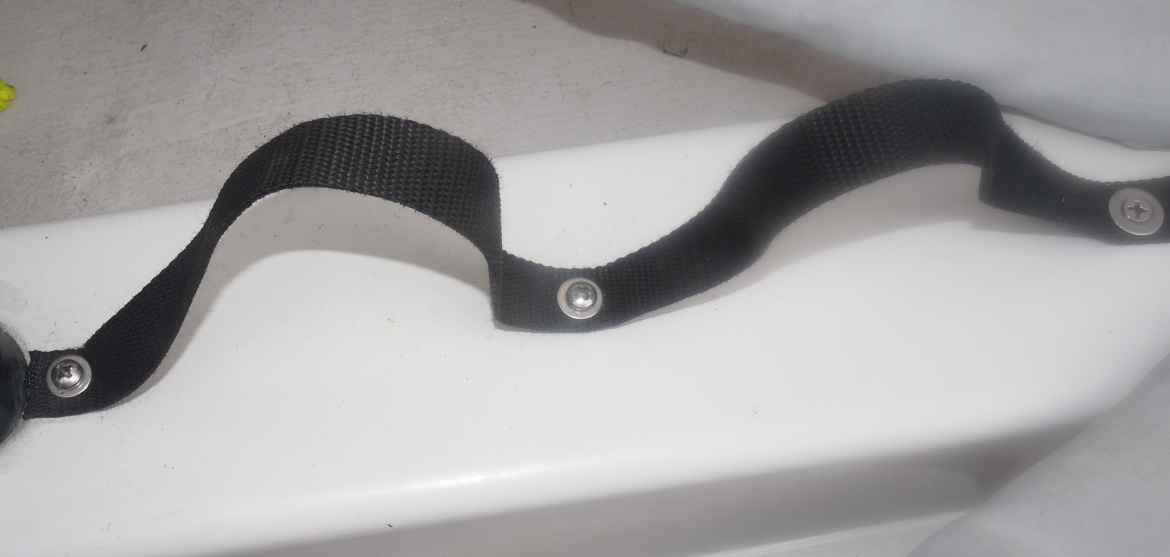

Tack slug failures mainly caused by factory plastic slug. Trash that trash and do a wonderful upgrade–a stainless steel slug. Available at Sailrite for all of $6.60 plus reasonable shipping. In fact, order a few–not for yourself, but for others who will need the crap plastic one replaced. Now, I’ve never done any testing on the two slugs, but one is plastic and one is stainless steel. Everybody breaks the original one. After having skippers at local fleet do this replacement, no failures.
Thanks for the comment. Here’s the link to the item he mentions.
Stainless Welded Slug 7/16″ – SailRite
The Sailrite replacement slug is just a touch longer than the original plastic one. A few turns on a bench grinder or mini-grinder is all you need–maybe 1/16″ off the top and bottom.